This old Riverside photograph raised a lot of questions when I first came across it. When and where was it taken? What was the occasion? Who are all the young ladies? Who is the one gentleman? What do the banners advertise? Where and what were these merchants? Most of these questions were answered by digging through old Riverside newspapers and city directories.
Early in October of 1903, the Fraternal Brotherhood made elaborate plans for the dedication of their new hall on the upper floor of the new Leighton Building, located at 883 Main St. (today 3883 Main St., the parking structure at the corner of Main and Ninth Streets). Fraternal Brotherhood was a fraternal and mutual aid society founded in 1896 in Los Angeles. The organization was one of the few groups that had both men and women as members. They decided to sponsor a large Merchants’ Carnival to celebrate this dedication occasion. They invited local business owners to participate to raise funds to furnish their new hall. A full slate of entertainment, dances, and merchant booths was planned for a three-day event.
Within a couple of weeks, thirty-two downtown stores had registered to participate in the carnival, with a young lady representing them. By the time of the event, the number had risen to forty. The main attraction was the young ladies representing the various merchants as they performed a drill routine for the attendees. The routines were executed with precision. Just in time for the holidays, the young ladies, dressed in costumes adorned with wares that advertised the establishment they represented, graced the floor of the new hall. In the group photograph, twenty-two costumed ladies are pictured with one gentleman. Here are a few of the participants who represented some of the early Riverside businesses.
In 1900, George N. Reynolds moved his department store into the prestigious new building on the northeast corner of Main and Ninth Streets (today, the location of the Main + Nine Lofts). A very popular establishment with Riversiders, the department store was represented by Miss Annie Mainland, who wore a black dress adorned with tinsel, tiny stockings, orange wood souvenirs, and other trimmings from the store. Miss Mainland is pictured in the middle row, third from the right, holding the Reynolds Department Store banner.
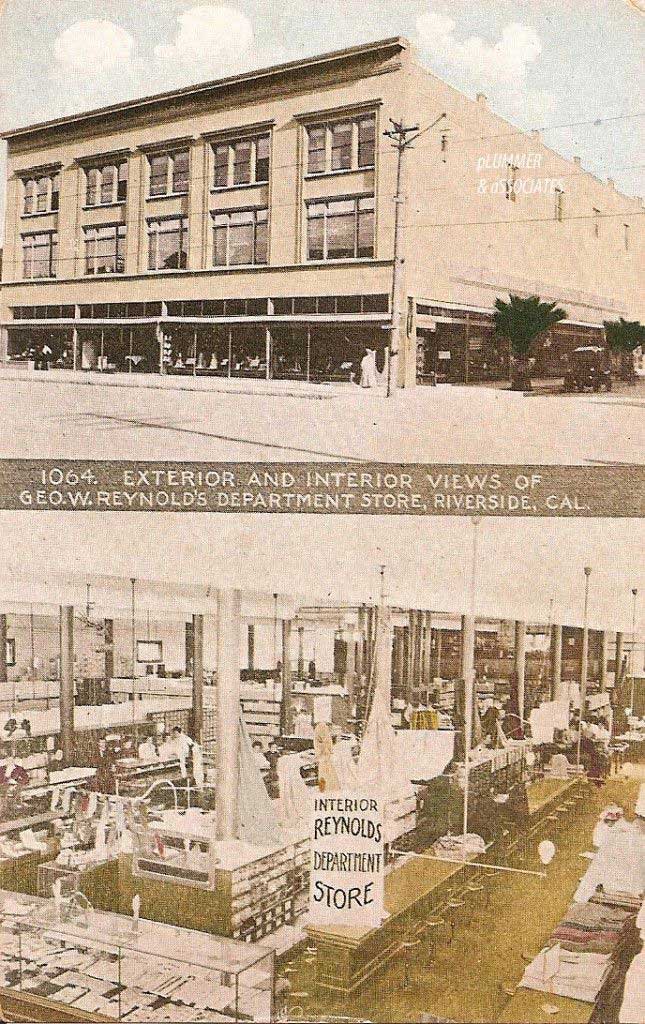
Instead of a banner, Miss Georgie Cresmer held high a tennis racket mounted on a pole, dressed in pink; she represented the Racket Department Store run by Backstrand and Grout. Miss Cresmer is the middle person in the back row. The tennis racket made a fine pun on the store's name, which was on Main Street near the southwest corner of Seventh and Main.
Miss Anida Bresson represented Kennedy’s Grocery Store, which was located at 662 Seventh Street (now would be 3662 Mission Inn Avenue), across the street from the Glenwood Mission Inn. She is seated in the front row on the far left wearing a black dress with the word RICE and trimmed with strings of cranberries, bordered with dried peaches, with frills of green peas and other garnishes befitting a grocery store.
Described as one of the handsomest dressers was Miss Eunice McLaren, who represented the Art Novelty Company located at 689 Main Street in the Loring building (today, the entrance for the upstairs offices in the Loring Building is at 3685). She wore a Native American leather outfit with a bow and arrow slung on her back and a basket as her cap. Miss McLaren is the middle person in the middle row.
Located at 749 Main Street (today would be 3749, mid-block between Seventh and Eighth) was Mathew’s Candy Kitchen. Miss Emma Eigenbrod sweetly represented this establishment in a black dress decorated with tinsel and fancy candies. She is standing on the far right in the middle row with the Mathew’s banner partially hidden behind her.
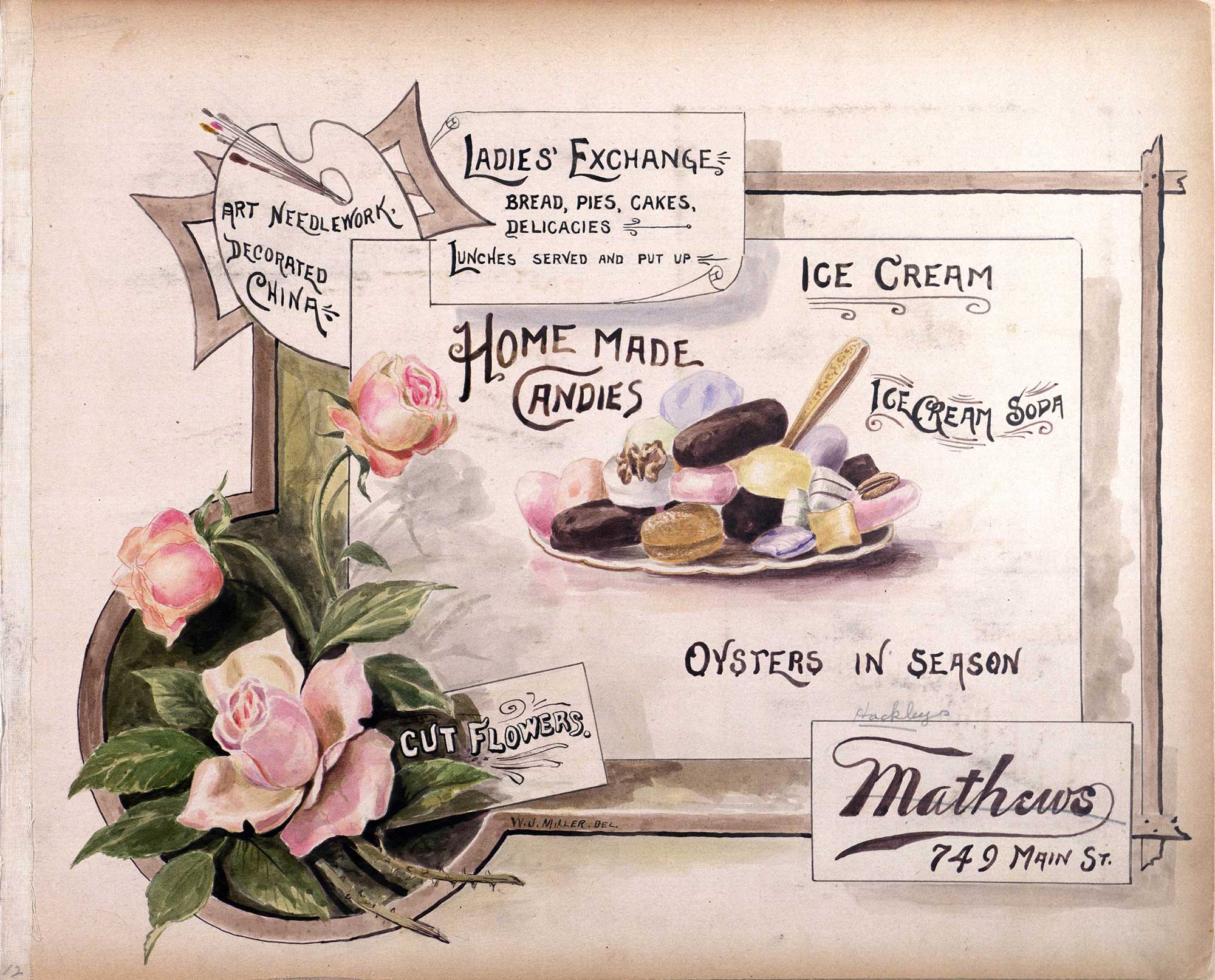
For the planting of the Parent Navel Orange Tree in the courtyard of the Glenwood Mission Inn by President Teddy Roosevelt in May of 1903, Franzen Brothers Hardware furnished the shovel. Now, in December, they joined other merchants in the carnival hosted by the Fraternal Brotherhood. Their representative, Miss Mamie Foster, is in the middle row, second from the left. Franzen had their store at 738 Main, between Seventh and Eighth, almost across the street from Mathew’s Candy.
Another hardware store that participated was J. G. Hansler’s at 761 Main St. (today part of what is now the Imperial Lofts at 3750 Main), almost across the street from Franzen’s. Miss Lorena McLaren ably represented their business, wearing a red dress trimmed with tin strainers, knives, whistles, a tin cup, a frying pan, a saw, a butter ladle, horseshoe nails, and miscellaneous other hardware items. Her banner was wire fencing with a hanging coffee pot and the name Hansler printed on it. A person would wonder how much her dress weighed! One can faintly see the name on the screen in the middle row to the far left, next to the Kennedy Grocery banner.
Neblett’s Drug Store was located in the Hayt Building on the corner of Seventh and Main Streets. The young lady, Ethel Foster, representing this drug store, is seated in the front row, second from the right, holding the Neblett banner.
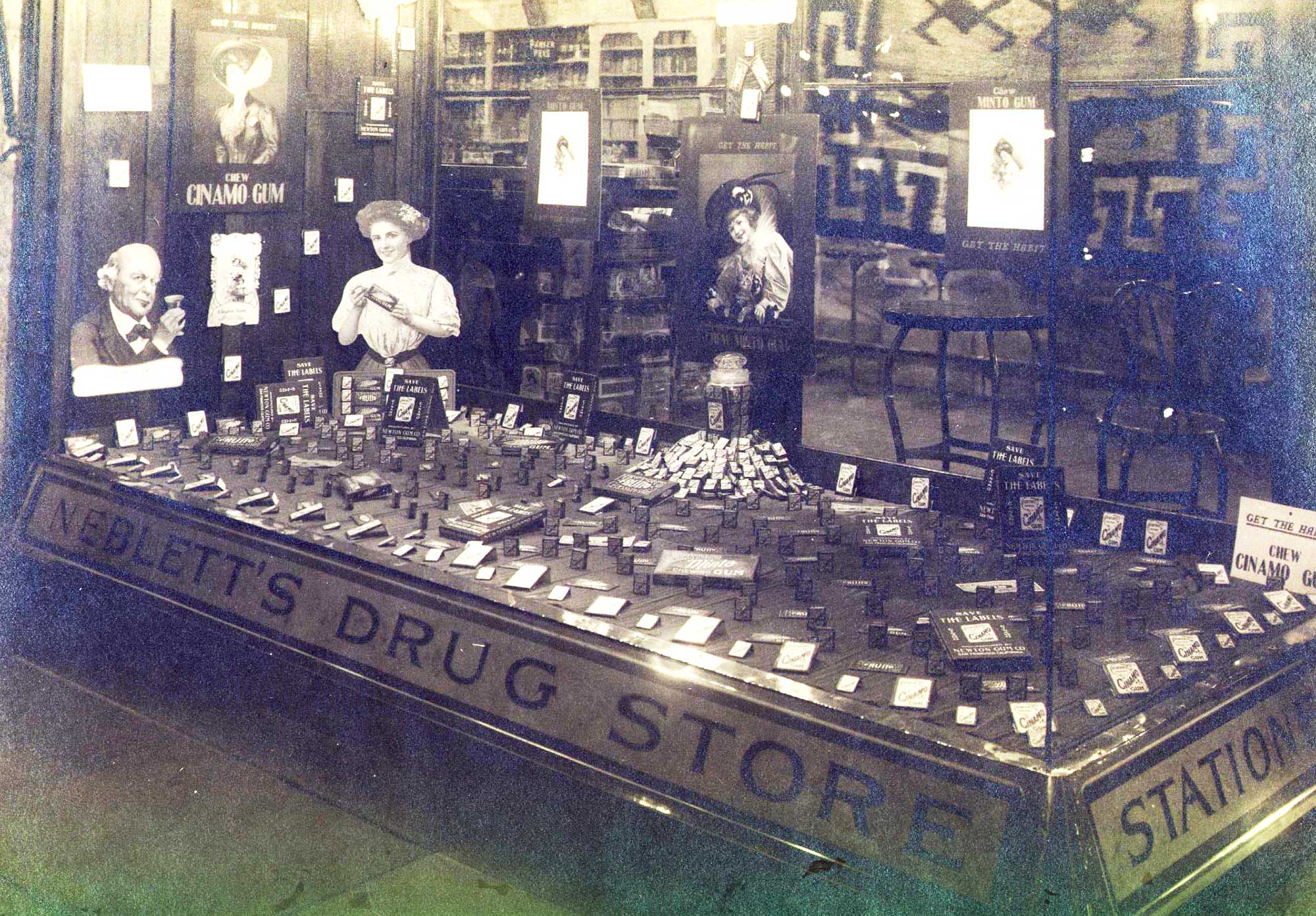
The second of the four drug stores that were present was Weck’s Drug Company. This druggist was at the northwest corner of Seventh and Main in the Loring Building (today, Citizen’s Business Bank occupies this location). Miss Edna Montgomery, who represented Weck’s, stands at the far right in the middle row. Her banner is somewhat faded but shows a pharmaceutical symbol.
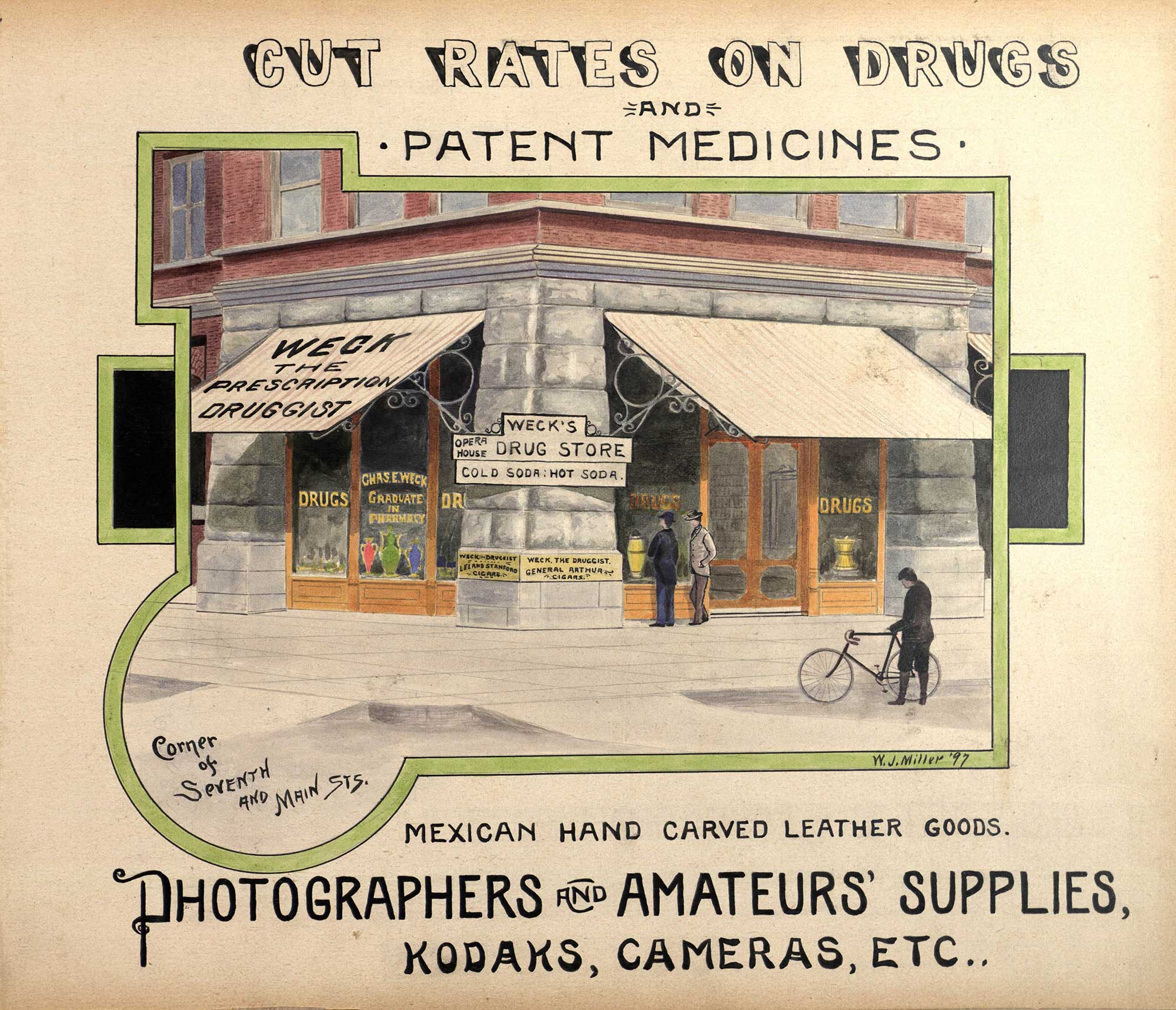
A long-time firm in the construction trade in Riverside was Cresmer & Ward, later just Cresmer. The plant was located at 170 – 195 Eighth Street, between the Santa Fe and Union Pacific Railroad tracks. Numerous buildings in Riverside owe their existence to Cresmer. Miss Viola Tune represented this company at the carnival. Her outfit shown in the upper right was not described, but one can imagine it had features dealing with the construction industry.
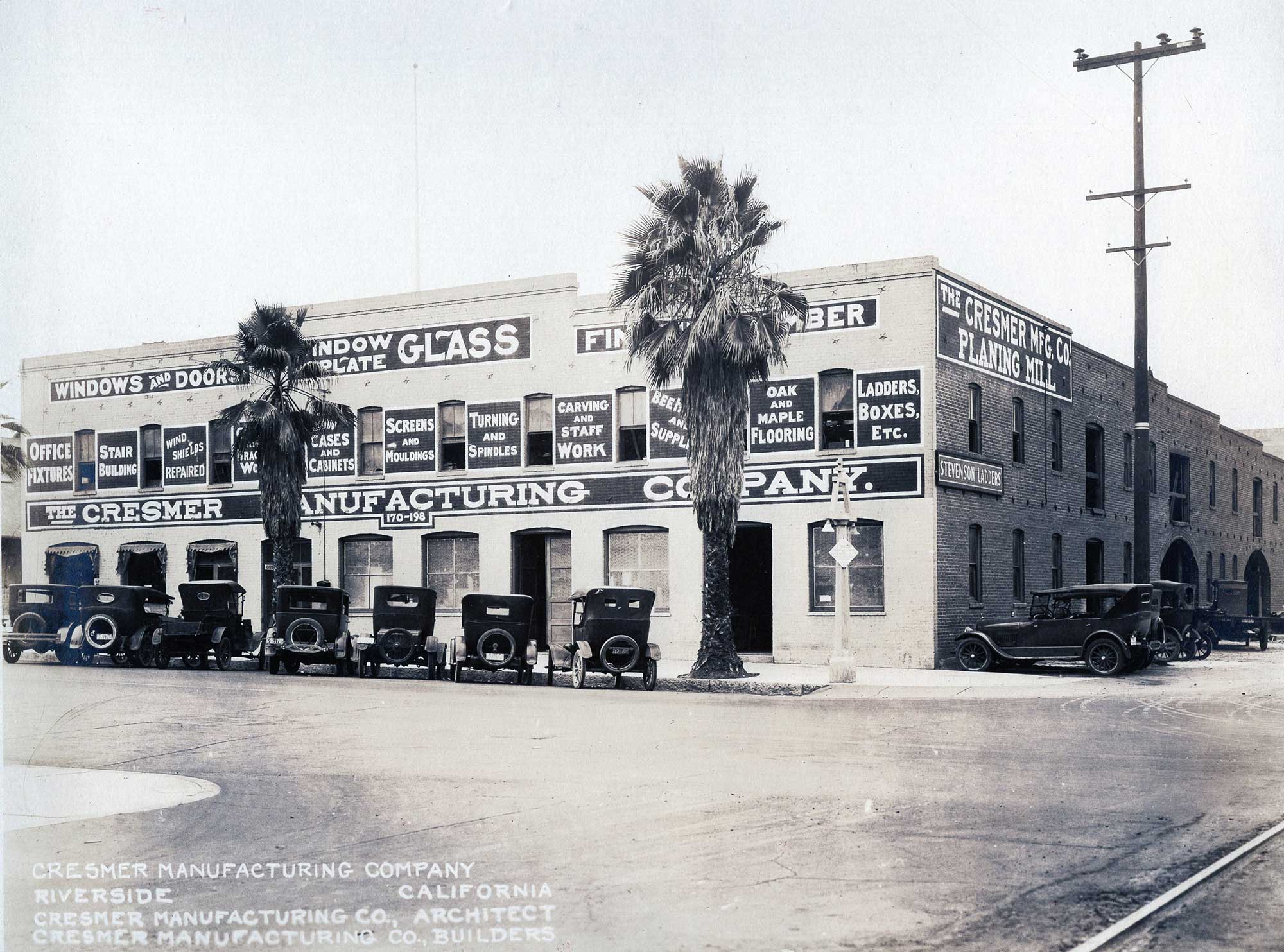
This list covers only ten of the forty participants but does give you a taste of the degrees that the merchants went to advertise their businesses and their wares. This also presents a few of the many early Riverside businesses that were prominent in those early years.
Unfortunately, none of these businesses still exist, and many of the fine buildings that housed them are also long gone. You can read about some of them in the informative book Riverside’s Invisible Past by Joan Hall.
One question remains: Who is the lucky gentleman pictured with all those lovely young ladies?









